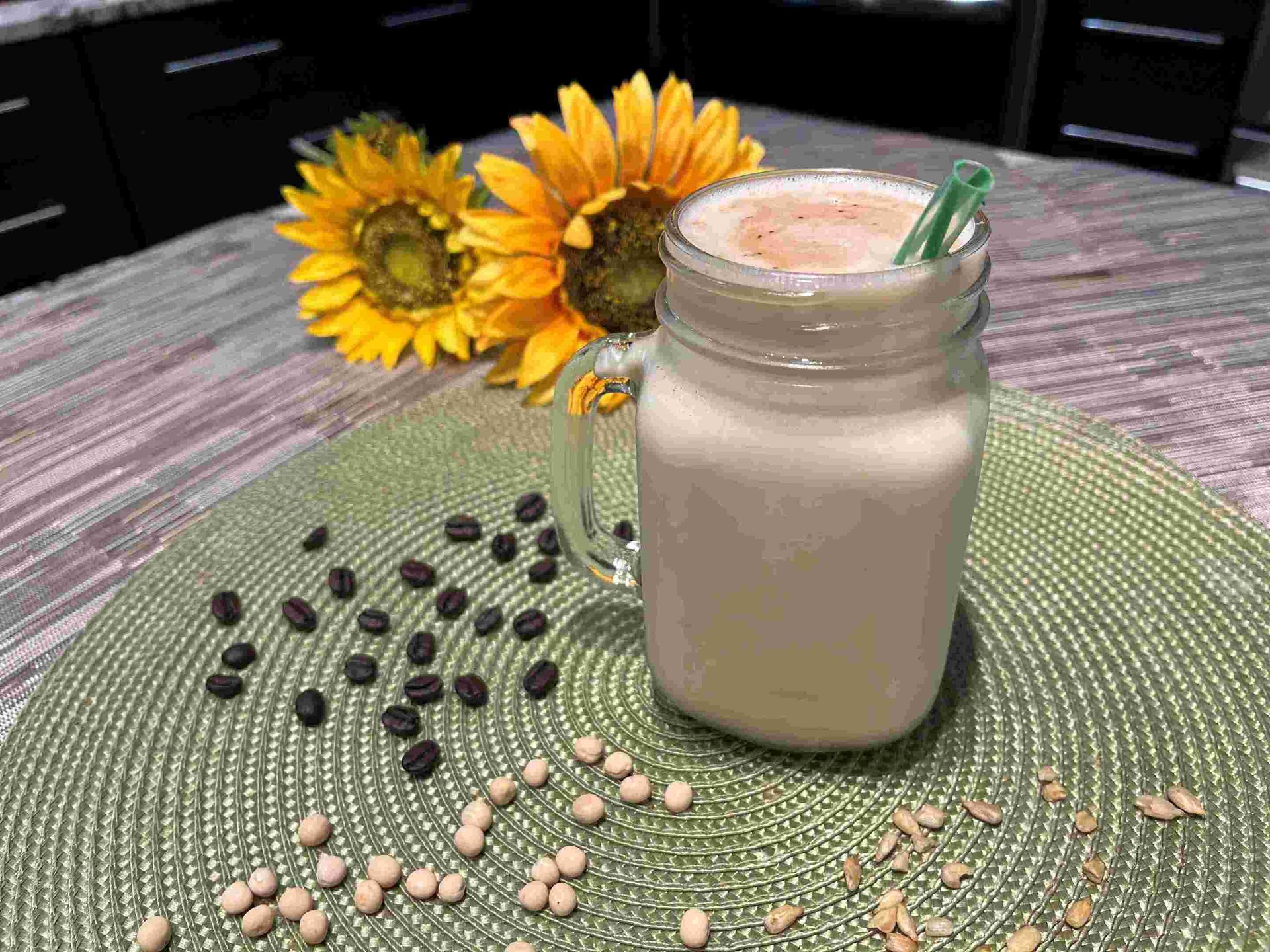
Milk sales swirl like fall winds
Protein, taste and functionality drive dairy ingredient innovation

Ingredients are similar to a great singer-songwriter. The hits keep coming and you can listen to many songs over and over for years to come, like Billy Joel, Journey, Bon Jovi, Pink or Lady Gaga.
Let’s take an in-depth look at the ingredient market, starting with the big buzzword: protein. Foods and beverages with added protein content are taking over for many shoppers, not just for health and wellness-driven consumers. Martin Schweizer, vice president, technical development for plant-based ingredient supplier Burcon NutraScience, explains, “Product developers are turning to plant-based proteins to replace or complement dairy in everyday staples like milk, cheese, creamers, spreads, and nutritional beverages.”
Still, protein-added products must taste good to secure a repeat purchase. Schweizer says that the difficulty for producers lies in creating plant-based food and beverage products that compete with the taste of their dairy counterparts.
Neutral-flavor plant proteins from suppliers like Burcon eliminate the need for masking agents in plant-based dairy alternatives. Almond protein powder has similar benefits, offering an extra-fine texture and clean taste, along with clean-label claims, explains the Almond Board of California's Charice Grace, manager for trade marketing and stewardship. Nuts, particularly almonds, are emerging as a strong player in dairy alternative innovation.
Schweizer notes that disappointing taste was one of the major downfalls of early-generation plant proteins. “These products often had clean-label challenges, as they required masking agents to cover off the less-than-desirable taste, aroma or mouthfeel,” he says. “Product developers need to know that the next-generation plant proteins have overcome the functionality challenges of earlier plant proteins.”
Almond ingredients are being introduced to new dairy alternative applications. Grace says that global product launches are showcasing a variety of almond ingredients in dairy alternatives, including almonds, almond paste, almond milk, almond protein and almond flour.
Cargill research concludes that consumers today are more focused on sugar and protein than fat content, which is shaping dairy product launches. Photo courtesy of Cargill.

Hybrid applications
Schweizer sees potential opportunities for collaboration between plant protein and traditional dairy processors by blending plant and dairy proteins. “Applications such as ready-to-mix and ready-to-drink beverages, nutritional drinks, meal replacements, creamers, yogurt, and cream cheese are all ripe for innovation,” he says.
Ingredient suppliers are further exploring nontraditional dairy applications; one standout innovation in this category comes from supplier BENEO’s collaboration with California Natural Color and GELITA; through this partnership, the companies developed a clean-label, milk-based sports drink, formulated to sustain energy, enhance endurance and promote efficient fat-burning. "This demonstrates how ingredient manufacturers can open new opportunities for brands, in this special case, in the area of sports nutrition and performance," says Kyle Krause, regional product manager for Functional Fibers and Carbohydrates, North America, at BENEO.
Cafe latte pea and sunflower protein cold beverage. Photo courtesy of Burcon.

Formulation concerns and consumer priorities
Texture is a major concern for dairy and dairy alternative products with added protein. Cargill Food Scientist Allie Schneider notes that stabilizers are critical in the protein fortification process. "Gums, starches and functional systems can smooth out mouthfeel and create a more indulgent sensory experience — an essential step for winning repeat purchases,” she adds.
Barbara Lezzer, marketing director for ingredients supplier Kerry Group, notes “Three universal consumer preferences are shaping the future of dairy: taste, nutrition, and texture.” Taste and mouthfeel, though, are what drive repeat purchases. Lezzer adds that, even in clean-label formats, “dairy products must deliver the rich, creamy experience that consumers know and love.”
There is not a single, clear-cut definition for clean-label products. Lezzer says definitions for the term vary by region and product type. "Across the board, we see sustained demand for natural flavors, shorter ingredient lists, and a move away from artificial sweeteners toard natural alternatives,” Lezzer adds. “Clean label today isn’t just about removing ingredients; it’s about formulating with purpose and transparency.”
Schneider says that clean-label demands are changing not just ingredients, but processing methods. “For example, some dairy processors are turning to techniques like filtration to minimize the need for stabilizers, aligning with consumer demand for simpler labels.”
Still, Schneider notes that brands must carefully balance functionality and simplicity, keeping taste front of mind throughout production. “Consumers may say they want clean-label products, but there’s a point where you can go too far,” she adds. “This is where fibers and flours shine. They tend to score well with consumers and deliver great functional benefits.”
Nutrition
GLP-1 medications are a widely discussed phenomenon, and for good reason; according to a study from FAIR Health, the use of GLP-1 drugs to treat overweight patients or obesity increased 587% when comparing 2019 to 2024.
Krause says that these medications are creating a major opportunity for dairy manufacturers. He notes that patient-focused nutritional guidance is key for patient health outcomes. "This presents not only a health-related need but also a market potential for the formulation of products that meet these specific requirements," Krause adds.
Ingredient suppliers are helping dairy processors increase nutritional value through prebiotic fibers. Krause notes that a growing number of yogurt, ice cream and other dairy innovations are being formulated with chicory root fiber, which supports digestive wellness while enhancing creaminess. Prebiotic chicory root fibers align with overall gut health trends while supporting sugar reduction.
Blueberry Yogurt Parfait. Photo courtesy of Kerry Group.

Digestive health is becoming a key component of overall health and wellness, Krause says. He notes that dairy products like yogurt or kefir are popular products to support gut health.
Krause adds that, according to a 2024 Innova Trends Survey, protein and fiber are top priorities for consumers. "With regards to product innovation, BENEO sees a huge development toward better-for-you products offering multiple functional benefits."
Lezzer says that consumers are interacting with the dairy category in new ways, fueled by changing nutritional concerns and lifestyle changes. A top nutritional concern for many consumers today is sugar content. Lezzer emphasizes that "Nearly 80% of consumers believe products with reduced sugar are healthier, and more than half say sugar content influences their purchasing decisions."
Digestive concerns in particular are creating strong demand for lactose-free innovations. Almond-based dairy alternatives are responding to the market's need for lactose-free dairy alternatives, especially for consumers seeking products with lower calorie counts, says Grace.
Looking forward
Fat content concerns have plagued dairy in years past, but now the industry is seeing a reversal. Cargill's Allison Leibovich, marketing manager for dairy and dairy alternatives, notes that the company's FATitudes research shows concerns about fat have steadily declined during the last 13 years, driven by younger generations. “Instead, the nutritional spotlight has shifted: consumers are much more focused on sugar and protein than on fat content,” Leibovich says. "That shift is shaping dairy launches, with more products intentionally formulated with higher fat levels than we would have historically seen."
Kerry anticipates the next wave of dairy innovation to be defined by blurred category boundaries. “One of the movements driving this shift is what Kerry calls ‘Category Crashers.’ This trend celebrates the rise of hybrid products that defy convention,” Lesser says. “In dairy, this could mean unexpected pairings and cross-category formats that merge indulgence, nutrition, and convenience.” Lesser reminds processors that consumers want better-for-you dairy products with strong nutritional claims, but they still crave a satisfying eating experience.
Leibovich sees a similar future for the dairy industry; she emphasizes that the dairy landscape has become very dynamic. “From breeding cows for A2 milk to new processing techniques, there’s a lot of experimentation underway.” She anticipates continued advances in processing technology, such as new dairy applications for ultra-filtration technologies. DF
Opening image courtesy of magnez2 / E+ / Getty Images.
